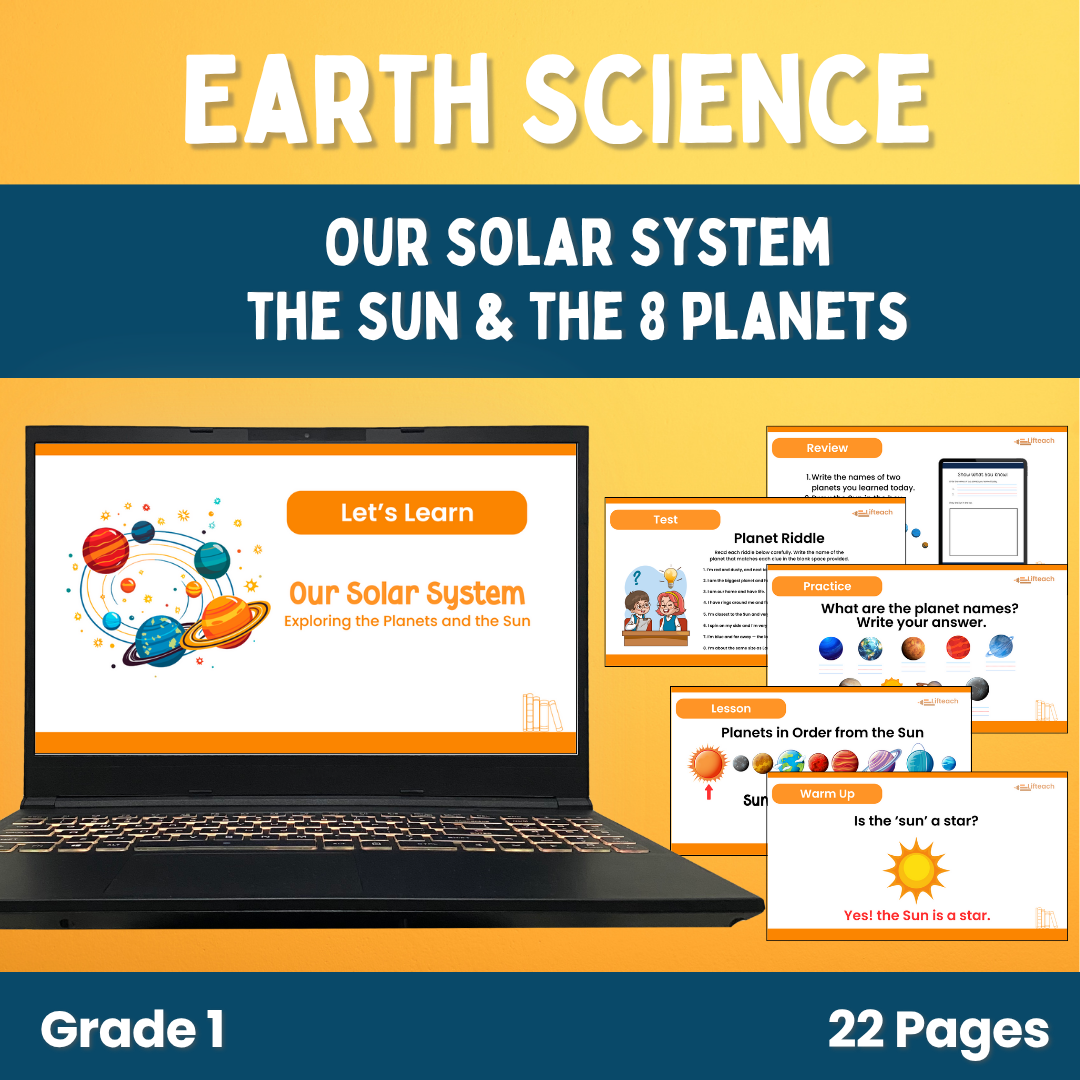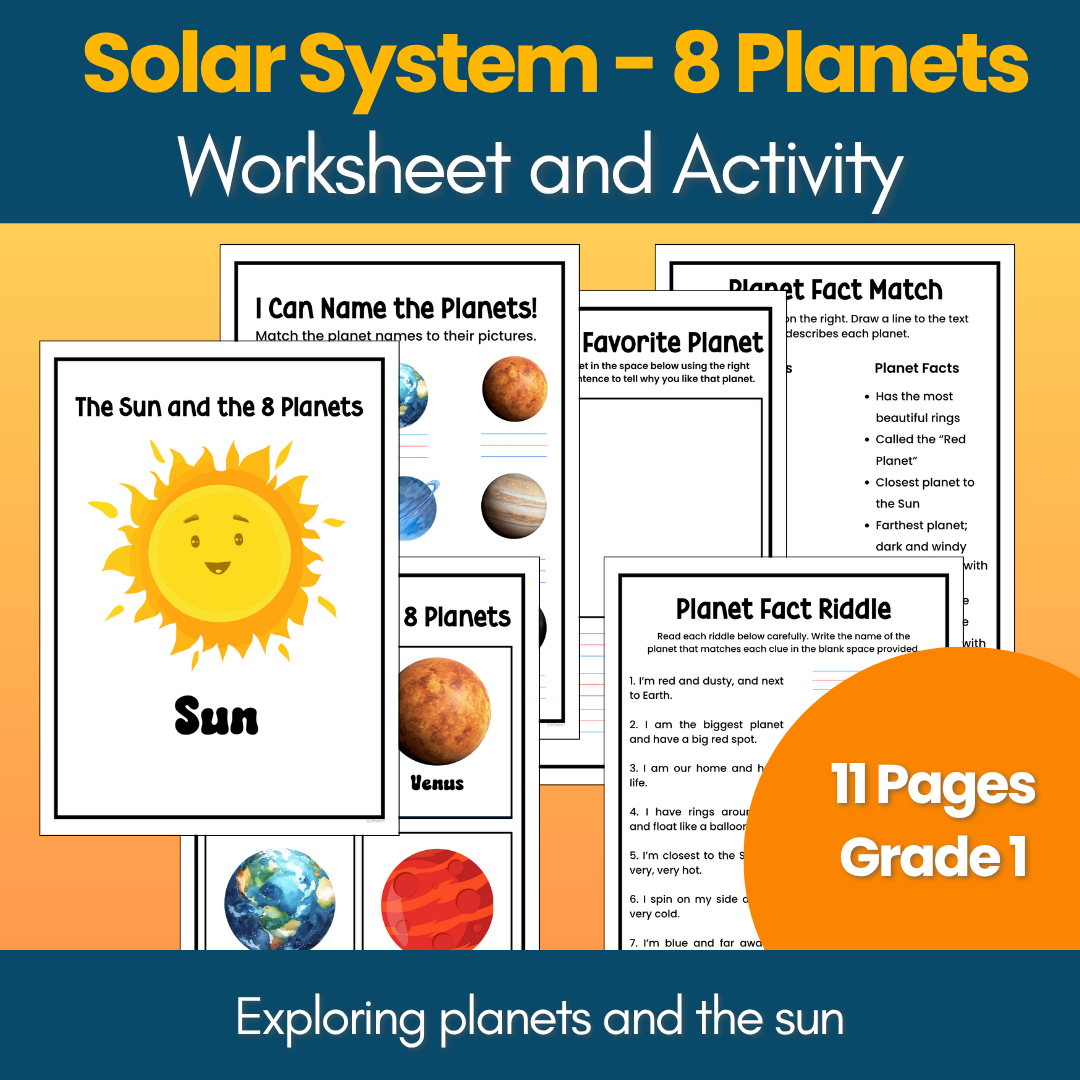Lesson Plan: Our Solar System
Grade Level: Grade 1
Subject: Earth Science
Duration: 50 minutes
1. Learning Objectives
By the end of this lesson, students will be able to
- Identify the Sun as the center of our solar system (NGSS 1-ESS1-1).
- Name at least four planets in order from the Sun (e.g., Mercury, Venus, Earth, Mars).
- Describe how planets orbit (move) around the Sun.
- Ask and answer questions about informational text (CCSS.ELA-RL.1.1).
- Participate in group discussions about science topics (CCSS.ELA-SL.1.1).
2. Standards Alignment
Science (NGSS)
• 1-ESS1-1: Use observations of the sun, moon, and stars to describe patterns that can be predicted.
English Language Arts (Common Core)
• RI.1.1: Ask and answer questions about key details in a text.
• SL.1.1: Participate in collaborative conversations with peers and adults.
• W.1.8: With guidance, recall information from experiences or gather information from provided sources to answer a question.
3. Materials & Resources
- “Planet Song” video (2–3 min) or read-aloud book about the planets
- Solar System model or poster
- Planet picture cards (Mercury through Neptune, plus Sun)
- Student worksheet (“Match, Label, and Draw Your Planet”)
- Crayons or colored pencils
- Sentence-starter strips (“I like ___ because ___.”)
- Chart paper & markers
- Exit-ticket slips (½ sheet of paper)
4. Lesson Timeline & Activities
|
Time |
Component |
Activities & Strategies |
|
0–5 min |
Engage/Launch |
Gather on the carpet. Show the solar system poster. Think-Pair-Share: “What is the Sun? Is the Sun a star?” |
|
5–15 min |
Explore/Direct Instruction |
Play the “Planet Song” video or read aloud a simple book. Stop to ask: “What is the Sun? Which planet is closest?” (RI.1.1) |
|
15–30 min |
Explain/Guided Practice |
Use planet cards to model ordering from the Sun. Students work in small groups to place cards in order. Circulate; ask each group to explain one planet (SL.1.1). |
|
30–40 min |
Elaborate / Worksheet Activity |
Distribute the “Match, Label, and Draw Your Planet” worksheet. Match the name to the picture, and label the Sun and Earth. Draw your favorite planet and write one sentence with a starter. (W.1.8) |
|
40–45 min |
Share/Discussion |
Invite volunteers to share drawings and sentences. Chart one new fact learned about planets. |
|
45–50 min |
Assessment/Exit Ticket |
On a slip: “Name two planets and draw the Sun.” Collect for a quick formative check. |
5. Assessment Methods
Formative:
• Teacher observation during Think-Pair-Share and group work.
• Review of worksheet for correct matches and sentence completion.
• Exit-ticket slips checked for naming two planets and Sun drawing.
Summative (optional follow-up):
• Planet bingo or matching game in the following lesson.
6. Differentiation Strategies
- Visual Learners: Large posters, picture cards, and video.
- Auditory Learners: Planet Song, choral response (“Mercury, the first!”).
- ELL & Special Needs: Provide word-picture cards and sentence starters.
– Pair with a buddy; allow verbal responses.
– Use manipulatives (3D planet models) for hands-on ordering.
- Advanced Learners: Challenge to add two more planets (Jupiter and Saturn).
– Write a two-sentence description of how Earth moves around the Sun.
7. Reflection & Next Steps
- Teacher notes: Which planets did students struggle to order?
- Plan a small-group reteach or extension with 3D models.
- Connect to the upcoming lesson on day/night patterns (1-ESS1-2).


